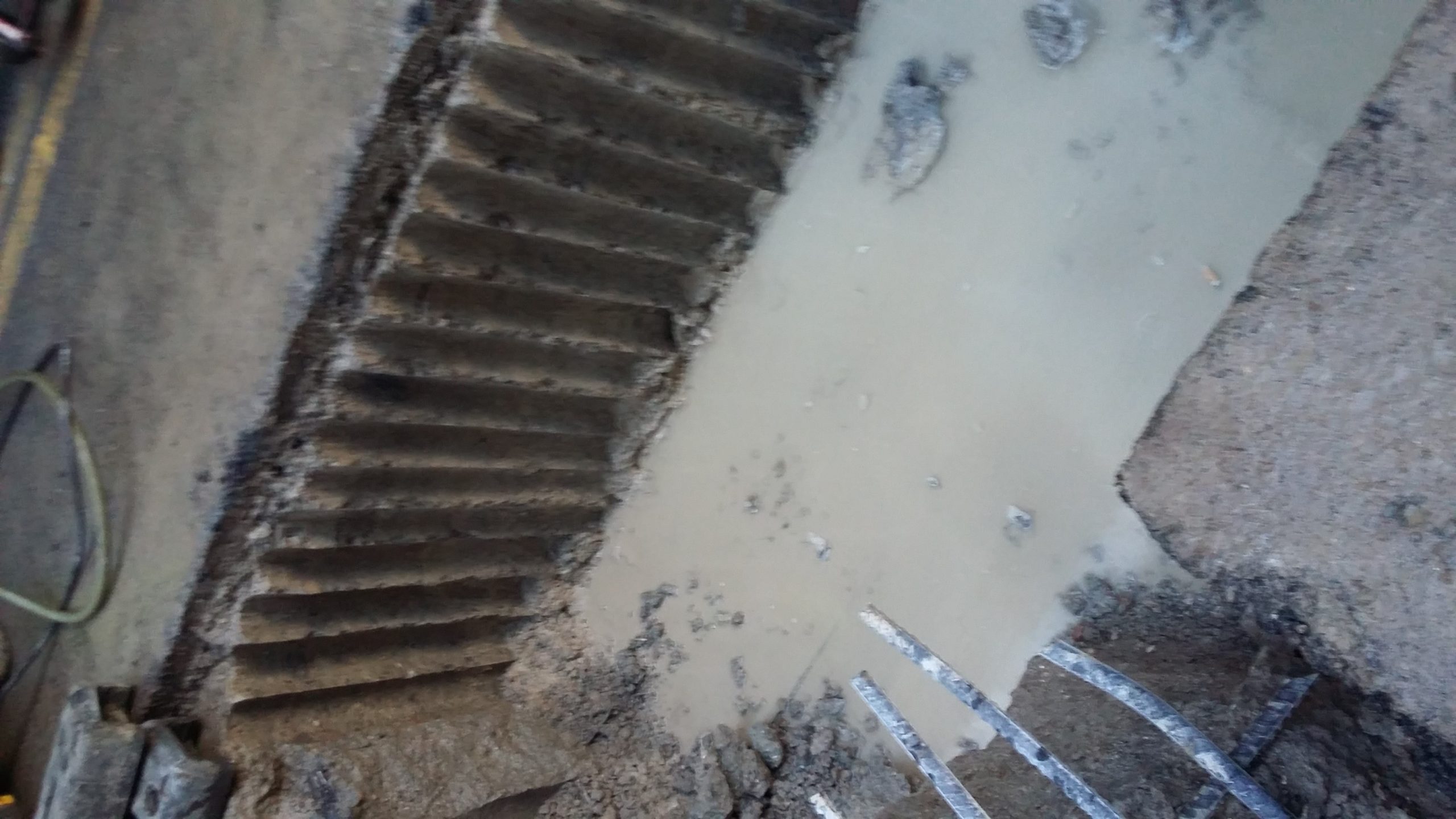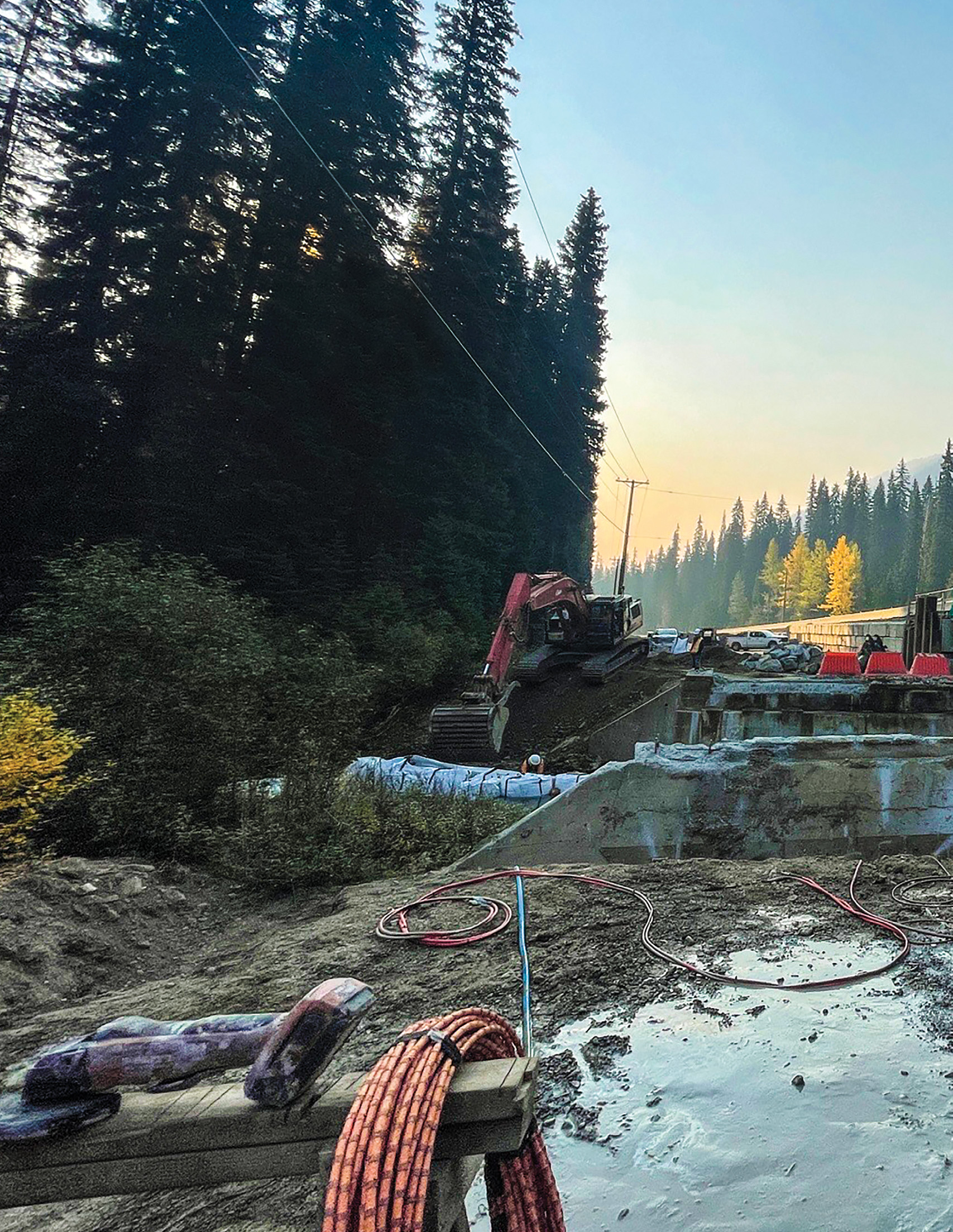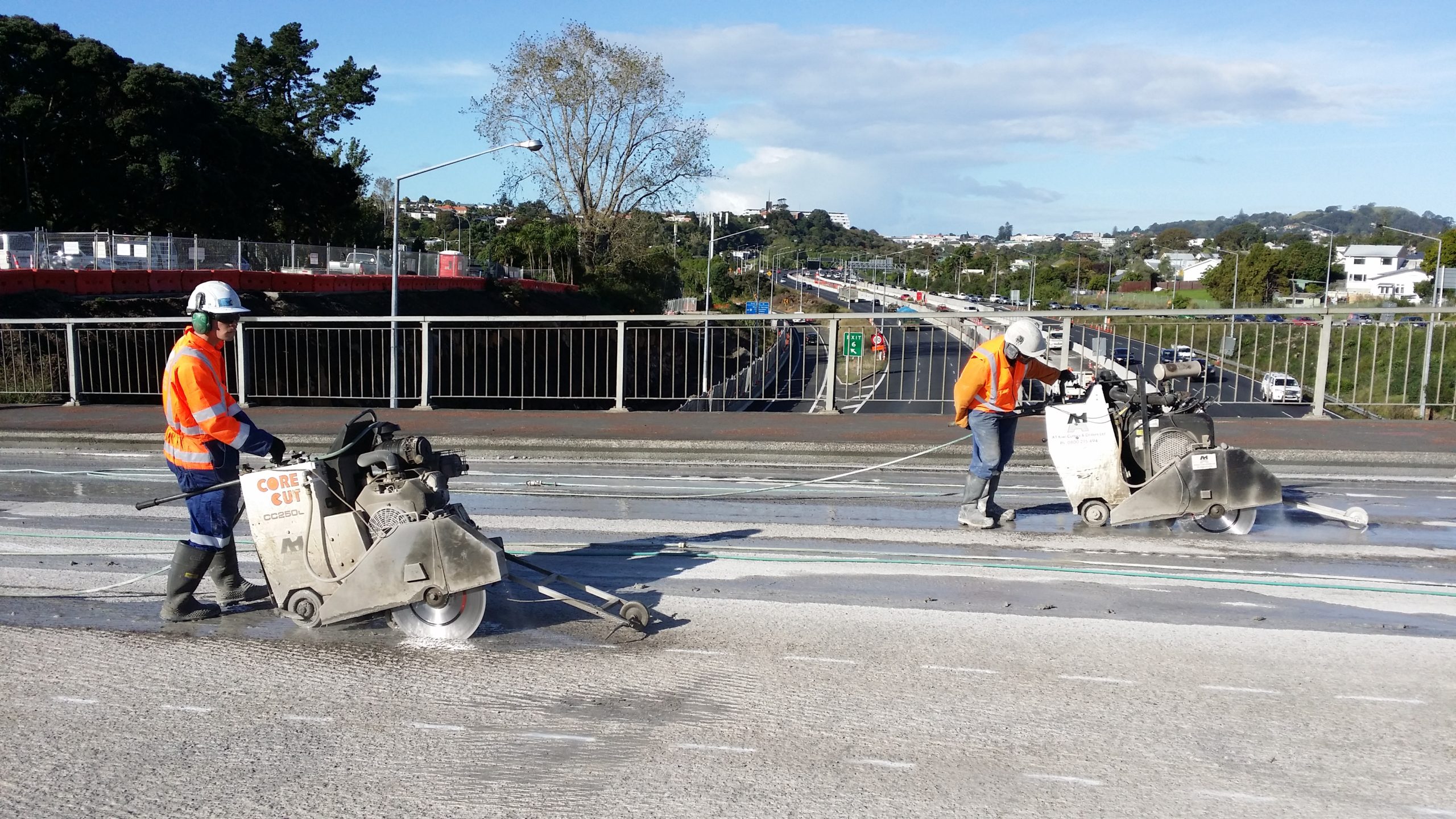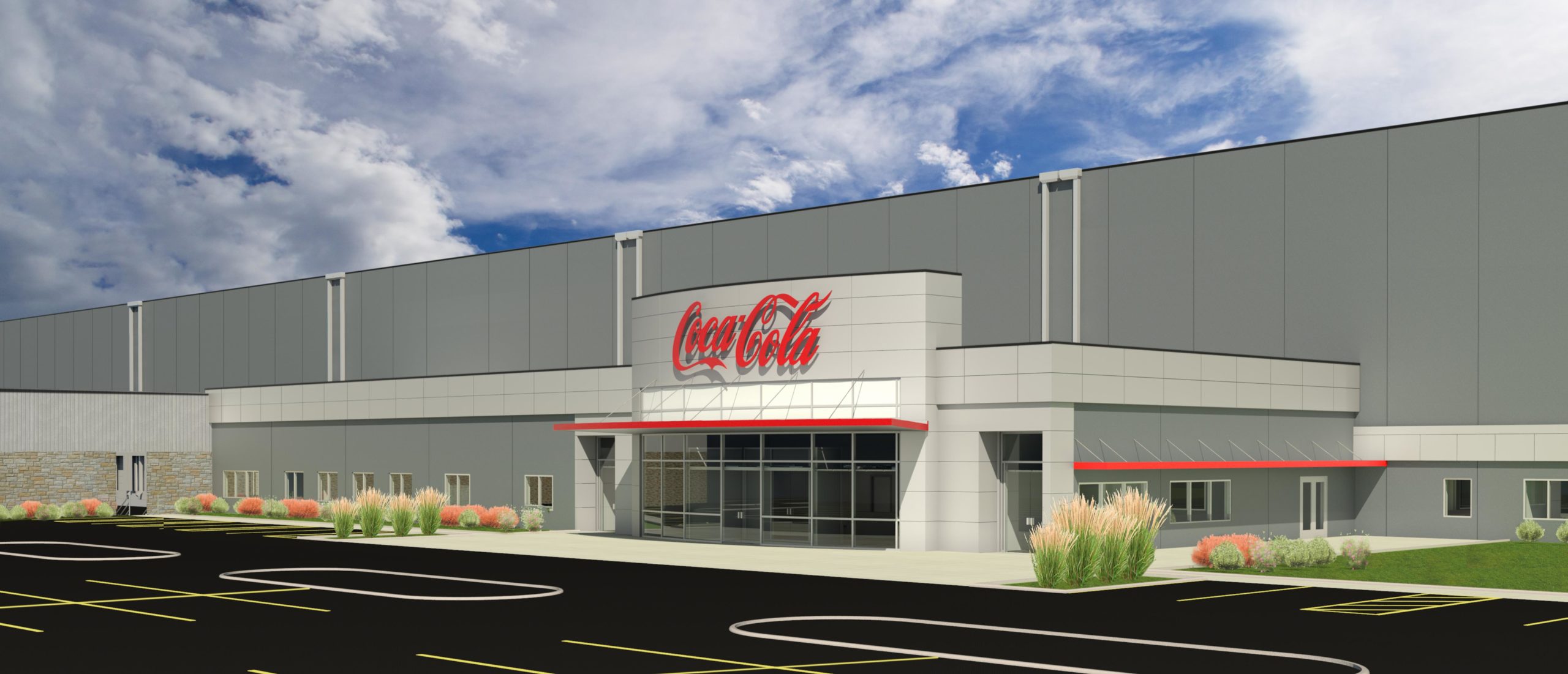
Cutting for a Higher Power


St Mary Church
On August 25, 2016, lightning struck in the wrong place. The 197-foot tall bell tower of St. Mary Church in Columbus, Ohio was struck by lightning during a thunderstorm, causing significant vibration through the wooden trusses supporting the roof and ceiling and disabling the church’s electronics, elevators and pipe organ. The vibration from the strike caused one of the trusses to slip down about four inches and as a result, the brick walls of the 151-year-old church began to lean out under the added pressure from the weight of the ceiling. Due to these structural weaknesses, engineers closed the church on October 7, 2016 until the necessary repairs could be made to make the church safe for worshippers again.
St. Mary Church is located in the historic Columbus area of German Village and was built in 1865 to serve the fast-growing German Catholic population of the area. It is the tallest structure in German Village, and the third oldest church in Columbus. It was added to the U.S. National Register of Historic Places on December 30, 1974. General contractor Corna Kokosing Construction Company was chosen to lead a $7.5 million restoration project. Part of this restoration would include installing ten steel “T” beams on the inside of the exterior brick walls from floor to ceiling. To install these beams, precision cutting was needed to reduce the risk of damaging the surrounding brick. Corna Kokosing trusted CSDA member Donley Concrete Cutting Company of Pickerington, Ohio to complete this part of the sensitive restoration project.
Saw cutting was necessary on this job because of the tight tolerances necessary to place the steel beams. Each cut needed to be an exact width and depth so that the beams could be lowered into the cuts through the roof and set back into the cut channel by crane. Any deviations from the set tolerances would have resulted in unplanned and expensive downtime with the crane. Saw cutting the brick walls would also eliminate unwanted vibration and dust, as excess vibration could have damaged the already weakened structure and the crew needed to follow guidelines to abide by the new OSHA silica regulations.
The first step to create the steel beam channels was to layout the necessary anchor points for the wall saws on all ten cuts. Donley was concerned that the weight of the saw and blade would be difficult to anchor to the walls without damaging the brick, so custom equipment was manufactured to lighten the load. First, a longer threaded rod with additional sleeves and Hilti HY70 epoxy was used to increase anchor strength. Next, a custom 36 inch Diamond Products wall saw blade with a ½ inch wide core and ¾ inch wide segments was manufactured to reduce the weight of the blade. A flush cut bolt pattern was also used to allow additional fasteners for blade security. The blade was attached to a Pentruder 8-20 high frequency wall saw with a custom aluminum blade guard and water hoses designed by Donley.
After the layout of the anchor points was complete, each anchor was hammer drilled and set using the Hilti HY70 epoxy and the additional sleeves. The anchors were left to set for 24 hours. Typically, the anchor holes would be drilled through the brick walls using threaded rods and plates to attach to the sawing equipment, but due to the wall and buttress thickness of up to 63 inches and the potential for spalling on the exterior, that process was not an option. Instead, Donley used pre-cut threaded rod which was epoxied into the brick using sleeves to help secure it in case of any voids in the brick.

The wall saw is mounted to begin the 40 ft tall vertical cuts.
Once the anchors were set, the team began setting up the Pentruder wall saw with the custom Diamond Products blade to create the ten channels. Each channel would require a 40 foot vertical cut ¾ inch wide and 14 inches deep. These cuts were made from the floor to the ceiling, creating the channel for the steel “T” beams to be lowered and set. This process was repeated until the ten channels were cut and ready for the beams.
Once the crane lowered the steel beam into the channel, the beam was grouted in place and the core drilling was able to begin. Pre-drilled holes in the beams allowed for one-inch diameter cores to be drilled through the 44 to 63 inch thick brick wall and buttress to permanently secure the beam to the wall. The walls were 24 inches thick, but the beams were added in line with the buttresses, which were thicker at the base of the wall, and tapered towards the roof. Donley used a Hilti DD350 core drill with one-inch Diamond Products core bits to complete the core drilling, which consisted of 40 total cores. When the cores were completed, the final hardware was installed to secure the beams to the brick walls.
This job required extensive attention to detail and extra precautions, as Donley had to make sure their work did not damage any of the existing structure of this historic building. Cutting with diamond tools was the chosen method of creating the channels for the beams, as chipping, chiseling or jackhammering could not have created the deep narrow channel required, nor could it have been performed without disturbing the adjoining bricks. Any falling debris could have damaged the existing wood floors or the intricate plaster carvings along the walls, which were to remain in place. Donley also had to make sure they fully contained the slurry created during the sawing and drilling process. Shoring towers had previously been erected to help carry the weight of each roof truss while the renovation occurred, and these towers happened to be directly in front of each location to be cut. Lifts and/or scaffolding could not be used in the congested area, so the shoring contractor installed platforms attached to the shoring towers every seven to ten feet to allow the crew to perform the 40 foot vertical cuts as well as the core drilling. Donley was able to also use this framework to install plastic sheets from floor to ceiling to contain the slurry. After each cut was performed, the slurry was vacuumed from the containment area using Hilti VC 40 U vacuums and properly disposed.
Operators wore all standard items of PPE and were secured with harnesses to retractable lanyards while working on the shoring towers. These lanyards were secured to the attic above each work area.
In the end, Donley Concrete Cutting performed 400 linear feet of saw cutting for the ¾ inch wide and 14 inch deep vertical cuts in the brick walls. They also core drilled 40 holes one-inch in diameter and 44 to 63 inches deep. The job was completed on time and within budget, with the cutting and drilling portion taking about six weeks. All ten of the beam channels were cut to within the required tolerances. Donley Project Manager Jason Young stated “I was very pleased with this project from start to finish. There were some unknowns that we had to work through as a team, but everyone gave one hundred percent and the end result was perfect!”
Jim Valentas, Senior Project Manager for Corna Kokosing spoke highly of the Donley Concrete Cutting team after the job was completed. “Corna Kokosing has worked with Donley Concrete Cutting for many years. They are a trusted partner on our projects and this project was no exception. As we reviewed the various potential structural fixes, we ultimately landed on the Structural T columns, but only after meeting with Donley at the church to confirm means and methods of doing the cuts. We relied on their expertise and recommendations to finish up the drawings and ultimately put the plan into place. Based upon years of working together, we knew that their safety culture aligns with ours and that the methods they came up with to do these vertical cuts would be done safely. They worked through the plan with us ahead of time and then executed that plan perfectly, allowing us to maintain the overall schedule and work towards reopening this church for Easter 2019. We are grateful to have a trusted partner in the concrete cutting field whom we can rely on for our day to day needs as well as those unique opportunities that come our way,” said Valentas.

The channel created to set the steal T-beams is cut
The precision of diamond tools and expertise of this CSDA contractor shows that CSDA cutting contractors can successfully tackle sensitive jobs with professionalism and confidence and ensured that St. Mary Church will be standing for years to come.
Company Profile
In business for over 20 years, Donley Concrete Cutting has been a CSDA member since 2004. They are based in Pickerington, Ohio with a support location in Cincinnati. Donley has 75 employees, 60 trucks and offers a full service of core drilling, flat sawing, wall sawing, wire swing, curb sawing, diamond grooving and grinding, selective demolition as well as ground penetrating radar (GPR) and profilograph services.
RESOURCES
General Contractor
Corna Kokosing
Columbus, OH
Sawing and Drilling Contractor:
Donley Concrete Cutting
Pickerington, Ohio
Phone: 614-834-0300
Email: Jason.Young@donleyconcrete.com
Website: www.donleyconcrete.com
Methods Used
Wall Sawing, Core Drilling














